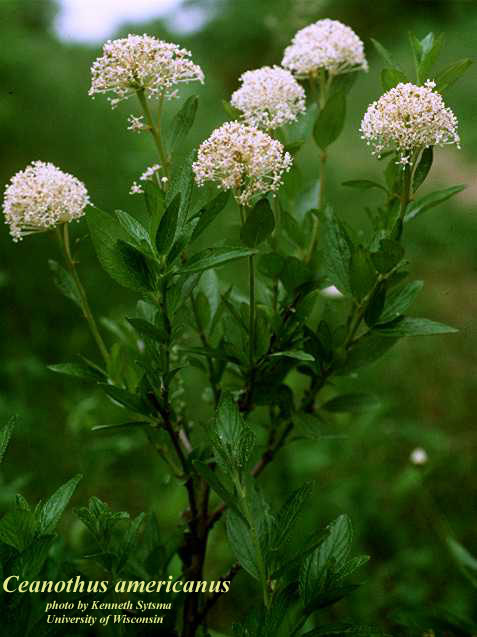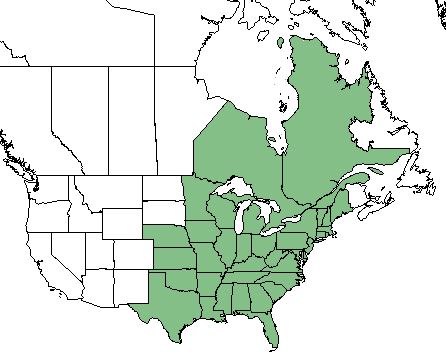Ceanothus americanus
Common Names: New Jersey Tea [1]; Red Root, Indian Tea Cite error: Invalid <ref> tag;
name cannot be a simple integer. Use a descriptive title
| Ceanothus americanus | |
|---|---|

| |
| Photo by the Atlas of Florida Plants Database | |
| Scientific classification | |
| Kingdom: | Plantae |
| Division: | Magnoliophyta - Flowering plants |
| Class: | Magnoliopsida - Dicots |
| Order: | Rhamnales |
| Family: | Rhamnaceae |
| Genus: | Ceanothus |
| Species: | C. americanus |
| Binomial name | |
| Ceanothus americanus L. | |

| |
| Natural range of Ceanothus americanus from USDA NRCS Plants Database. | |
Contents
Taxonomic Notes
Synonyms: Ceanothus intermedius (Pursh)
Variety: none
Description
C. americanus is a perennial shrub/subshrub of the Rhamnaceae family native to North America. [1]
Distribution
While it is more commonly found along the coastal plains of the eastern United States and Canada, C. americanus can be found inland as far west as Louisiana. [2]
Ecology
Habitat
The C. americanus is largely found in in sandy soil within woodlands and prairies. [1]
Phenology
The C. americanus commonly flowers between April and July, May being the most abundant month. [3]
Seed bank and germination
Seedling C. americanus are more likely to thrive when planted in late fall or early winter. [1]
Fire ecology
C. americanus has a high tolerance to drought and fire is a management technique for the spread of the species. [1]
Pollination
Bees may collect pollen from the plant and other insects such as butterflies and moths may just collect nectar. [1]
Use by animals
Many animals such as rabbit, elk and deer eat the grass from C. americanus while others will eat the fruit, turkey and quail for instance. [1]
Diseases and parasites
This species can acquire leaf spot and powdery mildew. [1]